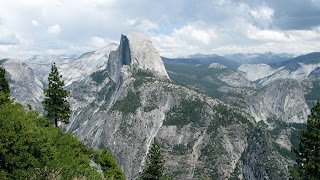Today I want to talk about a film which
I have seen recently and which has touched me deeply. I am talking
about BARAKA by Ron Fricke, which was released in 1992. Baraka is a
non-verbal film, so totally dialogue-free. Additionally, it doesn't
have any actors, a plot, or a script. The focus is on the images and
the music.
Filmed in 24 countries around the world
(eg. Argentina, Brazil, China, Egypt, France, India, Iran, Israel,
Japan, Kenya, Nepal, Tanzania, Thailand, Turkey USA and many more)
the images show some of the most stunning, but also most disturbing
parts of nature and human life: On the one hand, we can admire
natural landscapes, volcanoes, water falls, scintillating stars or
indigenous people dancing. You can basically indulge in the beauty
life has to offer. On the other hand, we see rapid urban life, images
of poverty and are witnesses of destruction of nature. The visual
power of each and every image is absolutely amazing as well as the
detail in every shot.
Having read quite a number of reviews,
I know that Baraka is not a film for everyone. While many viewers
found the film an exceptional, humbling experience or even a
spiritual journey and meditation, some were criticising the lack of
dialogue, some found it boring, and for others the images were pretty
disturbing at times, which is definitely true. They are
thought-provoking images, but at the same time they make us think and
talk about the topics they depict, which is a good thing.
Regardless of the many different views,
the film was a great experience for me and I hope I can interest
others to watch it, too.
If you want to find out more about the
film, here's a link to the website:
An interview with
director Ron Fricke can be found on the following page. Fricke, for
example, explains why he chose not to include words in his film or
what he sought to convey with Baraka:
If you have any thoughts about the film
that you want to share please feel free to do so!
All the best,
Judith
PS. This image is taken from http://www.spiritofbaraka.com/
© Copyright 2001 - 2011 SpiritOfBaraka.com
PS. This image is taken from http://www.spiritofbaraka.com/
© Copyright 2001 - 2011 SpiritOfBaraka.com



























